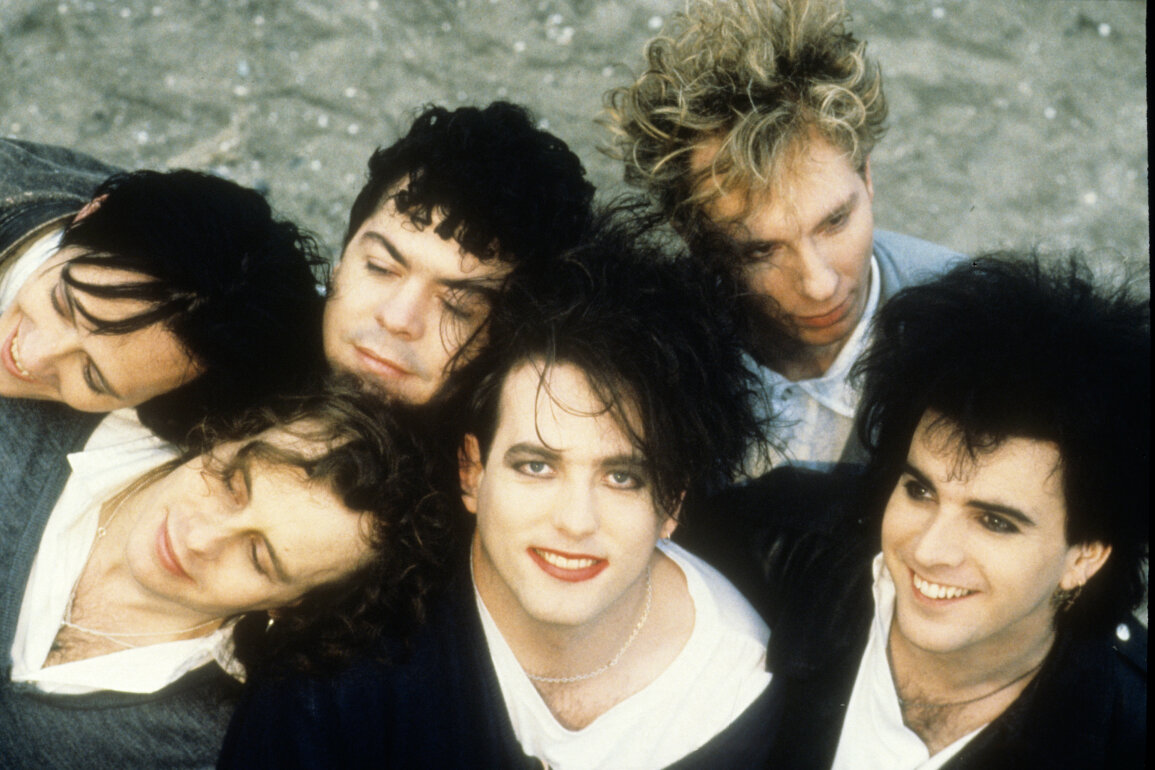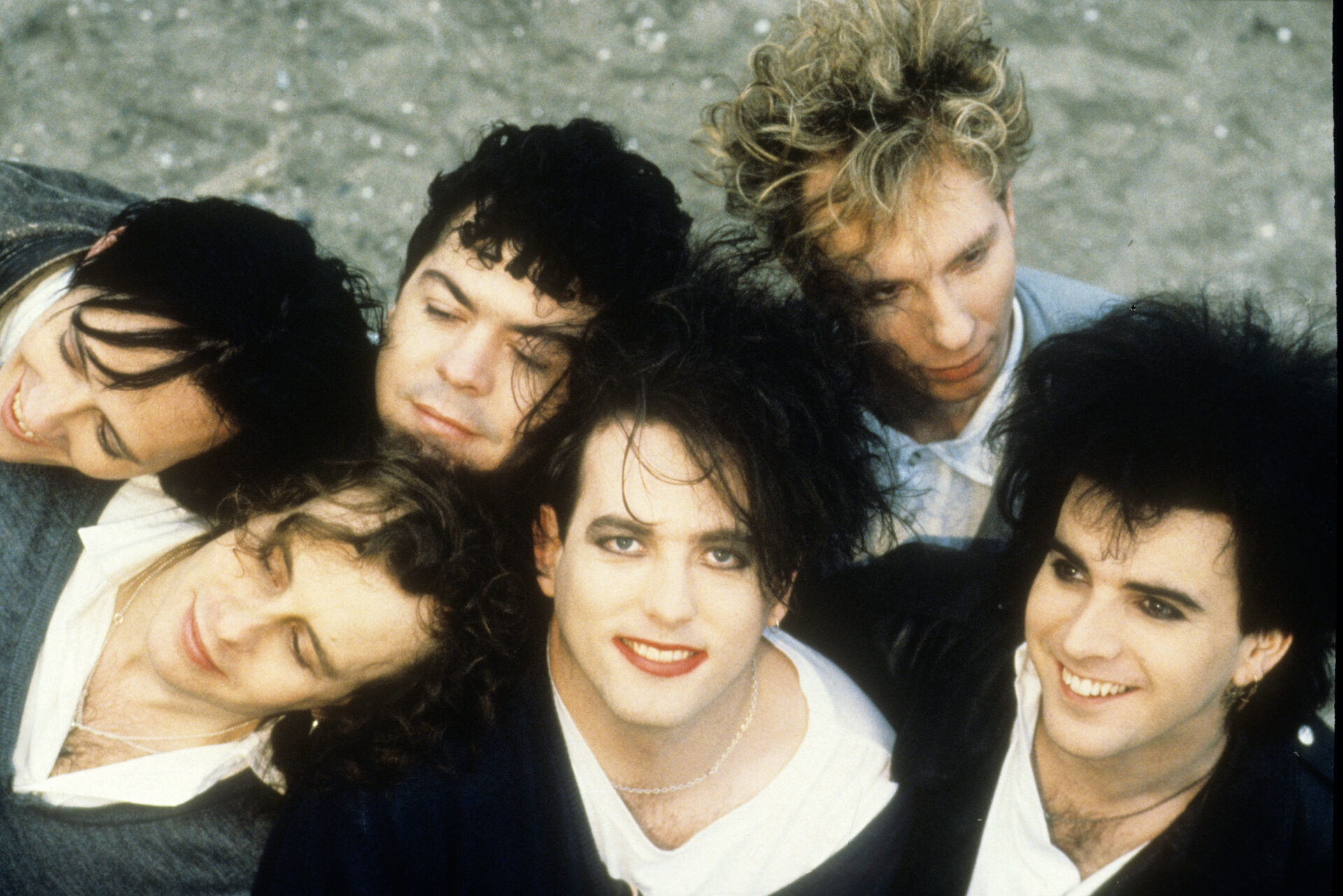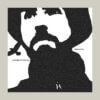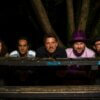I taped the Saturday sets from The Great British Music Weekend on the 19th January 1991 from the Radio 1 transmission. In all honesty, I did it because The Wedding Present was at the top of the undercard, just beneath The Cure. When I got to the headline set, something changed.
Up to that point, I was something approaching Cure-sceptic. A school mate, whom we shall call ‘Dave Steele’ in this piece (for that was his actual name), had lent me Pornography and The Top, followed a little later by Kiss Me, Kiss Me, Kiss Me. Somehow, I wasn’t convinced. I heard tracks that caught my ear, without that epiphanic moment you hope for when you try new music in your teens, especially when more than one person has opened with, “You really must listen to…”
It probably took two bars of ‘Pictures of You’ live at Wembley Arena heard from the glories of a C90 cassette to open the Cure door. I’d resisted getting stuck into Disintegration after the false start described above, unwilling to invest more of my evidently precious time, with that teenage stubbornness that can easily turn youth into bone-headed and wilful ignorance. The Wedding Present’s Bizarro was getting lots of play. Early Madchester music predominated on my Boots own-brand cassette Walkman. I had arrived just in time for Wish and was unbelievably glad I’d arrived when I caught them at The Royal Court Theatre in Liverpool in 1992 – a warm-up show for the tour of bigger venues.
It’s fair to surmise that if you’re here, reading this, you are a fair old Curehead already and don’t need too much guidance as to where to start. However, if you have only dipped your toe into the murky and profound waters of The Cure, or you know someone who really needs to sort themselves out and immerse themselves in the same deep waters as you, then the following Starting XI is a subjective list of tracks that gives a snapshot of their lengthy career so far, and might help lost souls find their way in.
Starting XI
‘Boys Don’t Cry’ – Boys Don’t Cry (1980) – Jangle
Need some jolly, jangly tunes with morose, desperate, self-loathing lyrics? Look no further than ‘Boys Don’t Cry’, a 1979 single that then provided the title for their 1980 compilation of early tracks that followed on from Three Imaginary Boys. There are plenty more jangles with sharp angles and emotional tangles to explore in The Cure’s discography. ‘Just Like Heaven’ and ‘In Between Days’ are prime examples.
‘Jumping Someone Else’s Train’ – Boys Don’t Cry (1980) – Early Post-Punk/Bass Bounce
Also a 1979 single, ‘Jumping Someone Else’s Train’ captures the band in ‘irresistible momentum’ mode. You’d have to imagine that if they’d kept going at this speed for the last forty-four years, they’d probably have become knackered and stopped by now. There’s a lot in this that you’ll hear from the work of future decades, but if you want the thrill of Michael Dempsey’s busy bass, you’ll have to catch the early train, although there’s plenty of fast and slow bass splendour in later tracks, especially doubling of bass guitars on ‘Primary’.
‘A Forest’ – Seventeen Seconds (1980) – Going Gothic
There may be only four months between this and the previous track in the list, but the shift is clear. You can catch fledgeling ‘Goth’ moments before the tracks on Seventeen Seconds, especially if you’re looking for them, but it’s tunes like ‘A Forest’ where the new bass sounds of Simon Gallup loom and the guitar really starts to swirl. They’ve gone moody, like a teenager who went into their room all agitated and post-punk, but came out under a darkly romantic but nihilistic Gothic shadow. As you’ll see from the video, though, the visual aesthetic that has become a stock-in-trade had not kicked in by ‘A Forest’.
‘The Walk’ – Japanese Whispers (1983) – Keyboards!
Cure do synth-pop? OK! Was necessity the mother of invention for this June 1983 release, as the band was briefly a duo of Robert Smith and Lol Tolhurst when Simon Gallup left the band at the end of their tour? Fewer hands to play instruments led to more machines used? Whatever the cause, the outcome was their first top-twenty UK hit. There were three rather perfect straight-up pop creations that came out in a burst of singles around this time (this track, ‘The Lovecats’ and ‘Let’s Go To Bed’). This one, ‘Lovecats’ and several others in their discography indulge their literary side. Wouldn’t a Robert Smith novel be cool, or letting him to the CBeebies Bedtime Story?
‘Shake Dog Shake’ – The Top (1984) – The sound and the fury
Pornography and The Top contain some of the most turbulent tracks you’ll hear from The Cure. As mentioned during the introduction, I formed an inaccurate view of The Cure in my early teens, having started with those two albums. Weirdly, once I’d filled in the context of the music before and after, as well as becoming older and wiser (up to and including the Wish album), I had learned to embrace the turmoil that tracks like ‘Shake Dog Shake’ embody.
‘Push’ – The Head On The Door (1985) – Stadium-sized rock
No wonder, after putting out a stadium-sized rock track like ‘Push’ on The Head On The Door in 1985, that they headlined Glastonbury for the first time in 1986. I remember hearing this at Manchester’s GMEX Centre in 1992 and feeling like it was made for the big spaces. Suffice to say it blew my teenage mind and didn’t help me prepare for my A-Level timed essay the next morning on the sonnets of Gerard Manley Hopkins.
‘If Only Tonight We Could Sleep’ – Kiss Me, Kiss Me, Kiss Me (1987) – Exotic and transformative
There are definitely moments in Cure songs where Crawley feels a million miles away. You can feel like you’re in the middle of some fictional world, or immediately on a totally different continent. ‘If Only Tonight We Could Sleep’ breathes a sense of exoticism. You could say that the Algerian beach of ‘Killing an Arab’ was an early statement of intent. Quite how one song can embrace the notions of ‘blissful’ and ‘tortured’ simultaneously frankly confounds me.
‘Pictures Of You’ – Disintegration (1989) – Symphonic
The second track on Disintegration, after the equally majestic ‘Plainsong’, this embodies the Cure era that many point to as the defining moment (cue massive argument amongst devotees…). As confessed above, this was my Goth breakthrough track. My fringe seemed to lengthen and the surroundings of my eyes to darken as I listened. The fella selling long, baggy jumpers near the station could frankly take my money. You could easily score a lot of Disintegration for a full orchestra. Actually, please could someone do this?
‘Doing The Unstuck’ – Wish (1992) – Unexpected Joy
Robert Smith doesn’t immediately strike the uninitiated as someone who is liable let out a kitten-like yelp, as he does endearingly on several Cure tracks. However, 1992’s Wish gave us some moments of unadulterated, pure Cure joy. And yes, more or less everyone has heard ‘Friday I’m In Love’ (and/or seen the lockdown ‘It’s Friday, I’m In Gloves’ meme), but Sombre Bob and his Munsters of Rock deliver the phrase, “Let’s get happy” on ‘Doing The Unstuck’. As cold and empty as the world of ‘A Forest’ felt, this feels lush and warm.
‘The Last Day Of Summer’ – Bloodflowers (2000) – Post-Millenium Cure
It’s too easy to suggest that The Cure are a 70s/80s/90s band. There’s some logic to that if you consider the weight of output that emanates from 1978-96 compared to what followed. Look at a set list from one of their recent shows or their 2019 Glastonbury headline slot and you’ll see the first two Cure decades predominate. Those in the know will already be straining to say, “Yeah, but Bloodflowers…”. Those in the know have a point. Tracks like ‘The Last Day Of Summer’ (with its quiet melancholia) have all the wistful substance of their musical forebears.
‘Underneath The Stars’ – 4.13 Dream (2008) – Savage Beauty
Take the vocal away from this track from their most recent album to date (not long to wait for a new one!) and it is basically post-rock. It’s the sound of valleys being hewn by glaciers eons ago, it’s the sound of solar systems being created and devastated. There are many Cure moments when you feel euphorically overwhelmed by and swept up in the scale of the track. The Romantic Poets talked of ‘the sublime’, beauty that could be savage and wild. There’s plenty of that to be found in The Cure’s discography.
So there you have it. If you want an alternative to the above, why not run your ears past the thirteen songs they played on January 19th 1991? Worked for me!





